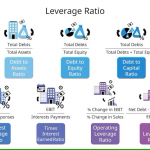In the realm of business, the game-changing decisions made by industry titans have shaped the landscape for decades to come. The world of mergers and acquisitions (M&A) has witnessed some of the most significant and awe-inspiring deals in history. From multi-billion dollar acquisitions to high-profile mergers, these transactions have not only redefined industries but have also provided valuable lessons for aspiring entrepreneurs and business leaders.
In this article, we delve into the biggest M&A deals in history and analyze the lessons we can learn from them. From the strategic thinking and negotiation tactics employed by the parties involved to the impact on market share and shareholder value, we uncover the keys to success in these monumental deals. By examining the real-world examples of these M&A transactions, we can gain valuable insights into effective deal-making strategies, due diligence, integration challenges, and the potential risks associated with mergers and acquisitions.
Whether you’re a seasoned executive, an aspiring entrepreneur, or simply curious about the inner workings of mega-deals, this article is your guide to understanding and learning from the titans of the business world. So, let’s explore the lessons that these historic M&A deals hold for us.
The Significance of Studying the Biggest M&A Deals in History
Studying the biggest M&A deals in history is crucial for understanding the dynamic landscape of business. These monumental transactions often serve as a reflection of the economic climate during their time, revealing how companies leveraged opportunities and navigated challenges. Analyzing these deals allows us to comprehend the strategies that led to their success or failure, as well as the broader implications for entire industries. Such insights can help current and future business leaders make informed decisions in their endeavors.
Furthermore, these M&A deals often set precedents that influence future transactions. When a massive company like Disney acquires a significant entity like 21st Century Fox, it not only reshapes the media landscape but also establishes benchmarks for valuation and integration practices. Understanding the contexts and outcomes of these deals helps to formulate a framework for evaluating new opportunities, allowing businesses to identify potential pitfalls and to seize emerging trends in their respective markets.
Additionally, the lessons gleaned from historical M&A transactions are invaluable for cultivating a mindset of adaptability and resilience. The business world is ever-evolving, and the ability to learn from past experiences can be the difference between success and failure. By studying both triumphant and troubled mergers, entrepreneurs and executives can better prepare themselves to face uncertainty and to innovate within their industries, ensuring longevity and relevance in the marketplace.
The AOL-Time Warner Merger: A Cautionary Tale
The AOL-Time Warner merger, completed in 2000, is often cited as one of the most infamous M&A failures in history. Valued at $164 billion, this transaction was heralded as a groundbreaking convergence of media and technology. However, the merger quickly fell apart as cultural clashes and strategic misalignments became apparent. The anticipated synergies never materialized, leading to a significant decline in shareholder value.
One of the critical lessons from this merger is the importance of cultural compatibility. AOL and Time Warner had vastly different corporate cultures, with AOL being a fast-paced tech company and Time Warner rooted in traditional media. This disconnect hindered collaboration, ultimately undermining the merger’s potential for success. To avoid similar pitfalls, companies must assess cultural alignment during the due diligence phase of any M&A transaction, ensuring that both entities can work harmoniously post-merger.
Moreover, the AOL-Time Warner merger underscores the necessity of realistic projections and expectations. The excitement surrounding the deal led to inflated forecasts, which failed to account for the rapidly changing landscape of the internet and media consumption. Businesses should be cautious about overly optimistic projections, focusing instead on grounded analyses that consider market trends and consumer behavior.
The Exxon-Mobil Merger: Lessons in Industry Consolidation
In 1999, the merger between Exxon and Mobil created the world’s largest publicly traded oil company, valued at approximately $81 billion. This deal is often hailed as a textbook example of successful consolidation within a mature industry. The merger allowed for enhanced efficiencies, reduced operational costs, and improved market positioning, which positioned the combined entity to better navigate fluctuating oil prices and other industry challenges.
One of the prominent lessons from the Exxon-Mobil merger is the significance of strategic fit and clear synergies. The two companies operated in similar markets and shared complementary resources, making the integration process smoother than in many other mergers. Businesses looking to engage in M&A should prioritize strategic alignment, ensuring that the combined resources and capabilities will create value for stakeholders while minimizing redundancies.
Additionally, the Exxon-Mobil merger exemplifies the importance of thorough due diligence. Both companies conducted extensive evaluations of their assets, liabilities, and operational structures, which facilitated informed decision-making throughout the merger process. Companies should prioritize comprehensive assessments to identify potential risks and opportunities, ensuring that they enter transactions with a clear understanding of the implications.
The Facebook-Instagram Acquisition: The Power of Strategic Acquisitions
In 2012, Facebook acquired Instagram for $1 billion, a move that has since been recognized as one of the most astute strategic acquisitions in the tech industry. At the time, Instagram was a small photo-sharing platform with just 30 million users, but Facebook recognized its potential for growth and innovation. The acquisition allowed Facebook to tap into a burgeoning market while also mitigating competition from a rising rival.
The Facebook-Instagram deal underscores the value of foresight and strategic vision in M&A. Recognizing the potential of emerging technologies and platforms can provide companies with a competitive edge in rapidly evolving industries. Businesses should remain vigilant about market trends and shifts in consumer preferences, leveraging strategic acquisitions to bolster their portfolios and stay relevant.
Moreover, the integration of Instagram into Facebook’s ecosystem highlights the importance of maintaining brand identity post-acquisition. Facebook allowed Instagram to operate independently while providing it with the resources needed for growth. This approach not only preserved Instagram’s unique culture but also fostered innovation, enabling it to thrive within the larger corporate framework. Companies should consider how to balance autonomy and integration to maximize the potential of acquired entities.
The Pfizer-Wyeth Merger: Navigating Challenges in the Pharmaceutical Industry
The 2009 merger between Pfizer and Wyeth, valued at approximately $68 billion, is a compelling case study in the pharmaceutical industry. This transaction aimed to diversify Pfizer’s portfolio by integrating Wyeth’s robust line of vaccines and biologics, which positioned the combined company to better respond to market demands. However, the merger also presented unique challenges, particularly in terms of regulatory scrutiny and integration complexities.
One key takeaway from the Pfizer-Wyeth merger is the critical role of regulatory considerations in M&A transactions. The pharmaceutical industry is heavily regulated, and companies must navigate a labyrinth of approvals and compliance measures. Understanding the regulatory landscape and proactively addressing potential hurdles can streamline the merger process and mitigate risks. Companies should engage legal and regulatory experts early in the process to ensure they are well-prepared to address any challenges that may arise.
Furthermore, the Pfizer-Wyeth merger highlights the importance of effective integration planning. The complexities of merging two large organizations can lead to operational inefficiencies and disruptions if not managed carefully. Companies should prioritize detailed integration strategies that outline key objectives, milestones, and responsibilities, ensuring that all stakeholders are aligned and working towards common goals.
The AT&T-Time Warner Merger: Vertical Integration and Media Conglomerates
The AT&T-Time Warner merger, finalized in 2018, marked a significant shift in the media landscape, combining one of the largest telecommunications companies with a leading entertainment conglomerate. Valued at approximately $85 billion, the merger aimed to create a vertically integrated company that could deliver content directly to consumers. This deal provides important insights into the evolving nature of media and telecommunications industries.
One of the key lessons from this merger is the potential of vertical integration to enhance competitive advantages. By combining content creation and distribution, AT&T aimed to streamline operations and improve customer experiences. Companies should consider how vertical integration can create synergies and provide a more comprehensive offering to consumers, allowing for greater control over the value chain.
Additionally, the AT&T-Time Warner merger exemplifies the challenges associated with regulatory scrutiny in M&A transactions. The merger faced significant opposition from the U.S. Department of Justice, which raised concerns about potential monopolistic practices. This underscores the importance of understanding the regulatory environment and anticipating potential pushback from government entities. Companies should be prepared to engage in robust discussions with regulators and to demonstrate the value of their proposed mergers to stakeholders.
The Lessons We Can Learn from These M&A Deals
The analysis of these monumental M&A deals reveals several key lessons that aspiring entrepreneurs and current business leaders can apply. First and foremost, the significance of cultural compatibility cannot be overstated. Mergers often bring together organizations with distinct corporate cultures, and a lack of alignment can lead to discord and inefficiencies. Therefore, assessing cultural fit during the due diligence phase is essential for successful integration.
Secondly, businesses must prioritize strategic alignment and realistic expectations. Understanding the synergies and potential challenges of the merger can help mitigate risks and enhance the likelihood of success. Companies should avoid overly optimistic projections and conduct thorough market analyses to ground their decisions in reality.
Finally, effective integration planning and regulatory preparedness are crucial for navigating the complexities of M&A transactions. Companies should develop detailed strategies to guide the integration process, ensuring that all stakeholders are aligned and engaged. Additionally, understanding the regulatory landscape and proactively addressing potential hurdles can streamline the merger process and facilitate successful outcomes.
Key Considerations for Successful M&A Transactions
Successful M&A transactions hinge on several key considerations that businesses should keep in mind. First, conducting comprehensive due diligence is paramount. This process involves evaluating the financial, operational, and cultural aspects of the target company to identify potential risks and opportunities. By gaining a thorough understanding of the target, companies can make informed decisions and mitigate potential pitfalls.
Another critical factor is the establishment of clear communication channels throughout the merger process. Open lines of communication foster transparency and collaboration, enabling teams to work effectively toward common objectives. Companies should prioritize regular updates and feedback loops to ensure that all stakeholders are informed and engaged throughout the transaction.
Additionally, businesses should focus on post-merger integration as a continuation of the deal-making process. This phase is often where the true value of the merger is realized or lost. Developing a robust integration plan that outlines key milestones, objectives, and responsibilities can help ensure that the combined entity operates cohesively and effectively.
Conclusion: Applying Insights from the Biggest M&A Deals to Future Business Strategies
The analysis of historical M&A deals provides invaluable insights that current and future business leaders can leverage to enhance their strategies. By understanding the successes and failures of these monumental transactions, companies can better prepare themselves for navigating the complexities of mergers and acquisitions. The importance of cultural compatibility, strategic alignment, and effective integration planning cannot be overstated, and these elements should be woven into the fabric of any M&A strategy.
Furthermore, the lessons learned from these deals highlight the importance of adaptability and resilience in an ever-evolving business landscape. As industries continue to shift, being able to learn from past experiences and apply those insights to new opportunities will be crucial for sustained success. Businesses must remain vigilant about market trends and consumer preferences, leveraging M&A as a tool to drive innovation and growth.
In closing, the world of mergers and acquisitions is fraught with challenges, but it also presents immense opportunities for those willing to learn from the titans of the business world. By applying the lessons gleaned from these historic deals, aspiring entrepreneurs and seasoned executives alike can position themselves for success in their future endeavors. As the business landscape continues to evolve, the principles of strategic deal-making will remain as relevant as ever, guiding the way for the next generation of industry leaders.






